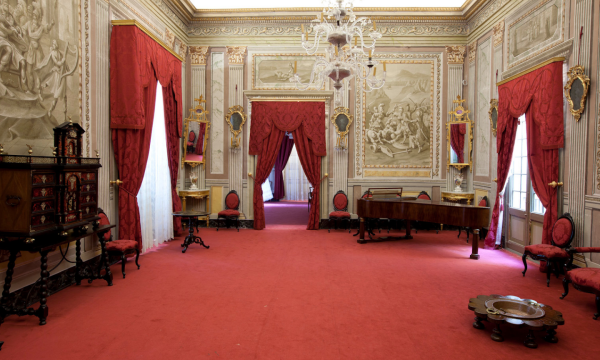You can find it at:
The Museu Romàntic Can Papiol, located at the historical centre of Vilanova i la Geltrú, is a house museum that evokes the daily life of a wealthy 19th century family through the ambiance of its rooms, which are decorated with furniture and ornaments of their period. The house was the ancestral home of one of the most influential families in the village, the Papiols. When Francesc de Papiol i Padró (1750-1817) passed away, the Torrents family took ownership of the house. The Diputació of Barcelona (the Provincial Council) acquired the estate in 1959, and it was inaugurated as a museum in 1961.
The house preserves its original structure, distribution and decor. The exterior follows the austere canon of the time, with a neoclassical façade and painted architectural elements. The interior, on the other hand, stands out for its lavishness.
The entrance hall gives access to the library, situated on the mezzanine floor, where about 6,000 volumes of various subjects, from the 16th to the 19th century, are collected.
The most sumptuous part of the house is the main floor. Its rooms preserve the richness of the refined taste of the 19th century, with furniture and decorative accessories in the styles of Louis XV, Louis XVI, Empire, Isabella II and Ferdinand VII. The walls are decorated with paintings showing biblical scenes. Among the most interesting and luxurious rooms are the music room, the billiard room and the large ballroom, where the family welcomed their friends and guests and where social and literary gatherings, as well as musical evenings, were held. It is also worth mentioning the room and alcove “of the General Suchet”, named this way because, according to tradition, it was here where this soldier stayed during the Peninsular War. The house is provided with a small private chapel in neoclassical style, presided by the urn which contains the body of Saint Constance, a child martyr during the first Christian persecutions in Rome.
The tour resumes through the rooms of the servants, the ones destined to domestic chores and through the farming area, at ground level.
Lastly we should also mention the magnificent garden, entirely conceived in a Romanticism style, where at present some of the carriages and bicycles of the time can be found.
Visits to the museum are always commented, and prior reservation is available at the website.
